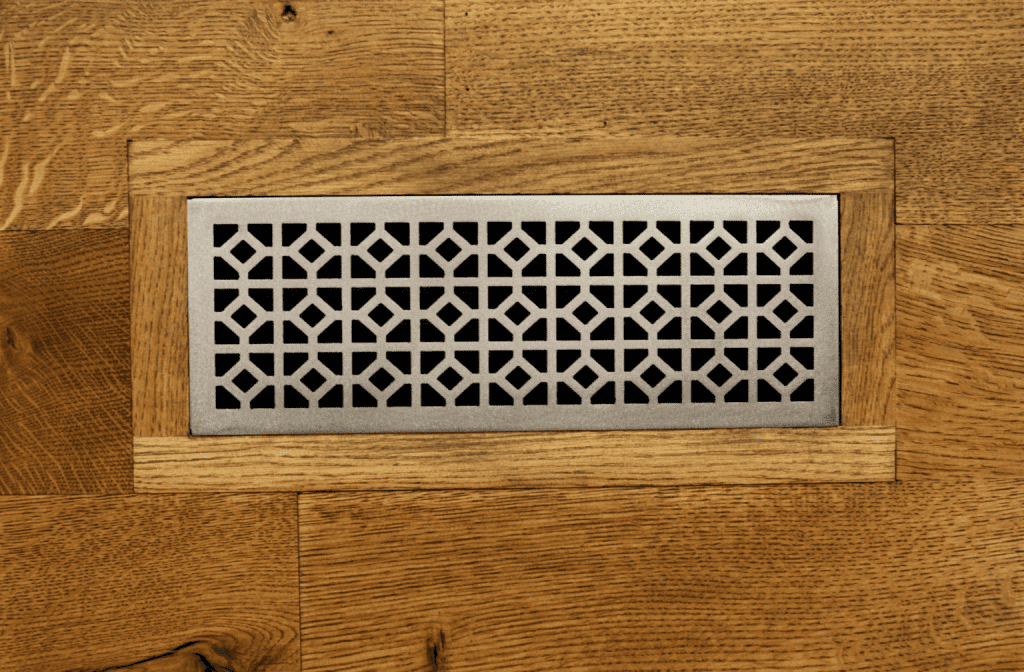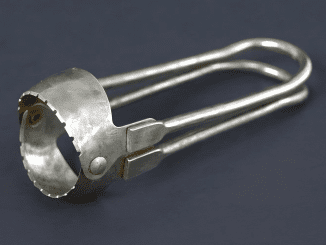Floor vents and registers are critical components of any heating, ventilation, and air conditioning (HVAC) system, playing a key role in regulating airflow and maintaining indoor comfort. While often used interchangeably, registers and grilles have unique functions that directly impact HVAC performance. From ensuring proper temperature distribution to maintaining energy efficiency, understanding these components can help you make informed decisions about your home or commercial space’s ventilation system.
Understanding Registers vs. Grilles

The terms “register” and “grille” are sometimes used interchangeably, but they serve distinct purposes within an HVAC system. Let’s break down the differences:
- Grilles are perforated covers for air ducts. They allow airflow but lack movable parts to control direction or volume. Grilles are typically used for returns, where air is pulled back into the system for heating or cooling.
- Registers include a damper, which can be adjusted to control the flow and direction of air entering a room. The presence of a damper distinguishes a register from a grille, making it a functional component in delivering conditioned air.
Registers are often placed strategically within a space to distribute air evenly and maintain comfortable temperatures. The ability to adjust airflow makes registers more versatile for controlling room conditions.
Register Size and Placement: The Key to Efficient Airflow
Proper placement and sizing of registers are crucial for HVAC efficiency. Registers are typically placed near windows or doors, where the greatest heat or cooling loss occurs. This setup helps compensate for temperature fluctuations caused by outdoor exposure. In contrast, returns are usually located on interior walls or ceilings, closer to the center of the building, to draw in air effectively.
In spaces where maintaining a steady temperature is vital, like offices or living rooms, multiple registers may be used—often with one near the ceiling to distribute cold air and another on the floor for warm air. Proper placement of both registers and returns allows for balanced air distribution, ensuring comfortable temperatures in every corner of the room.
Selecting the Right Register Size for Optimal Performance
The size of a register should match the room’s heating and cooling needs. If a register is too small, the HVAC system must push air through the ducts at higher speeds, resulting in a loud rushing sound that can disrupt the environment. Alternatively, air moving too slowly through a large register won’t efficiently adjust the room’s temperature.
To avoid issues, consider the room’s function and noise tolerance when selecting a register size. For instance, rooms requiring minimal noise disturbance, like bedrooms, benefit from larger registers that reduce air velocity. Additionally, proper sealing and secure installation are essential to prevent air leaks, which reduce HVAC efficiency.

Floor Registers vs. Wall Registers: Which Is Best for Heating?
The placement of registers influences air circulation. Floor registers are preferred for heating purposes since warm air rises naturally, creating efficient circulation as it cools and falls. Floor registers also have sturdy grilles that can withstand foot traffic, making them ideal for placement in high-traffic areas without compromising durability.
When floor registers aren’t practical, wall registers can be used effectively. Typically, wall registers are positioned across from windows to combat the cold air descending from the glass. For wall registers to work efficiently, the air must be pushed with enough force (or “throw”) to cross the room, preventing cold drafts and maintaining proper air circulation. Without sufficient throw, warm air fails to reach distant areas, leading to uneven room temperatures.
The Function of Register Dampers in Temperature Control
Register dampers play a critical role in controlling indoor temperatures by allowing you to adjust airflow. Here’s how dampers can enhance your HVAC efficiency:
- Precision Temperature Control: Dampers allow you to regulate how much warm or cool air enters a room, helping you fine-tune comfort levels.
- Seasonal Adjustments: During winter, dampers in air conditioning registers can be closed to keep cold air out, allowing warm air to circulate more effectively.
- Efficiency Boost: In unused rooms, closing dampers conserves energy by directing conditioned air to frequently occupied areas.

For commercial spaces like hotels or hospitals, dampers may include fire-sensing mechanisms that automatically close in case of smoke or extreme heat, preventing fire and smoke from spreading through the building’s ventilation system.
Why Floor Registers Are Essential for Efficient Heating
Floor registers are particularly effective in heating applications due to the natural behavior of hot air. When warm air is released from a floor register, it rises and mixes with cooler air as it cools and falls, creating a balanced circulation throughout the room. This process maintains a consistent temperature and reduces the likelihood of hot or cold spots.
Additionally, floor registers are durable enough for foot traffic and can be installed in areas where wall registers might be less effective. For optimal heating, a floor register should be at least six inches from room corners, ensuring adequate airflow without obstruction.
Maintaining Your Registers for Long-Term Efficiency
Keeping registers clean and functional is essential for the longevity and efficiency of your HVAC system. Dust and debris can accumulate over time, reducing airflow and diminishing air quality. Regular maintenance, including vacuuming around registers and wiping down the grille and damper, can prevent blockages that strain your HVAC system.
For rooms with different temperature requirements, adjusting the damper seasonally helps keep energy use efficient while providing comfort where it’s needed most. In large commercial or institutional buildings, schedule periodic maintenance checks on fire dampers to ensure safety systems are fully operational.
Conclusion: Floor Vents and Registers as Vital HVAC Components
Floor vents and registers may seem like small details, but they’re essential for HVAC efficiency, temperature control, and safety. Proper sizing, placement, and regular maintenance of registers significantly improve the functionality of any heating or cooling system. By understanding how registers and dampers work together, you can achieve better indoor comfort, reduce energy costs, and enhance the overall performance of your HVAC system.


